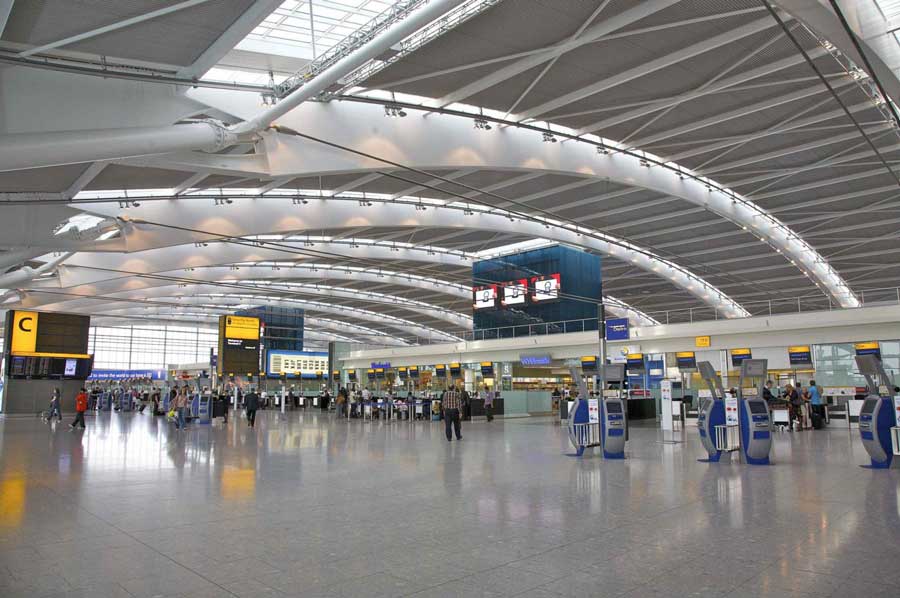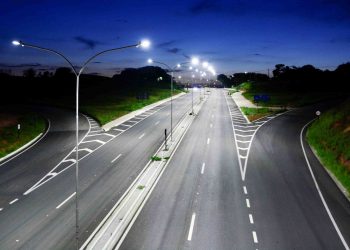
5 main points in Lighting Standards for Airports
In Brazil, there are several Lighting Standards for Airports, which are present in different regulatory and legal diplomas. Therefore, when developing a lighting project for these environments, it is necessary to observe different rules regarding each environment or situation.
For example, as airports usually receive aircraft and pilots from other countries, international standards for runway lighting must be observed. In passenger terminals, commercial lighting rules must be followed.
Similarly, in workrooms, ergonomics standards for offices must be observed. Therefore, the development of airport lighting is a challenging project that must be conducted by experts. Want to understand better? Follow along!
What are the requirements for airport lighting design?
An airport has several environments, so there is no single standard that governs the entire space. Therefore, to facilitate the organization of a project, we must consider that there is usually a need for several lighting systems within airport projects:
- Commercial lighting, which must be observed in passenger terminals;
- Industrial lighting, which governs transportation and cargo storage spaces;
- Lighting in work environments, which must take into account ergonomic regulatory standards in closed rooms and airport offices;
- Roadway lighting on access roads to the airport;
- Specific lighting for night signaling and vertical signaling of runways, which follows international standards;
- Specific lighting for the aircraft parking area.
5 main points in Lighting Standards for Airports.
As we explained, airport lighting design requires attention to various environments, such as terminals, the aerodrome, and hangars.
1. Lighting in passenger terminals
In this case, the main technical norm to be followed is NBR ISO/CIE 8995-1:2013, which establishes the interior luminance criteria in establishments that carry out activities related to industry, commerce, sports, and education. It replaces an old norm from 1992, NBR 5413, in order to bring international standards of excellence to projects.
Its main objective is to bring visual comfort and safety to users of an environment, including employees and customers. In environments where work activities are carried out, it is necessary to ensure the following parameters:
- Uniformity of light – there should not be a significant difference in luminous intensity throughout the area intended for task execution, unless a specific activity requires a more focused light at a workstation. It is sought to prevent employees from being exposed to constant visual adaptation, which can cause intense discomfort;
- Glare control – this phenomenon occurs when excess lighting or high intensity of a luminous beam causes intense discomfort or impairs vision. For this, the project must take into account the ideal intensity, temperature, and focus for good visual acuity in that task;
- Integration with natural light – whenever possible, natural light should complement artificial lighting. In this sense, dimmable luminaires, whose beam intensity can be adjusted, are excellent options;
- Color temperature – in work environments, cold or neutral colored lamps should be used.
In turn, in rest spaces or spaces primarily intended for passengers, lighting can be oriented towards coziness. In this sense, it is interesting to have less uniform lighting and warmer color temperatures. In all cases, the norm recommends the use of high-performance luminaires, such as LED technology.
In addition, rules related to emergency lighting must also be taken into account. They provide for a complementary lighting system with self-generated electric power or batteries, focusing on paths and emergency exits, as well as high luminance.
2. Lighting in warehouses, cargo yards, and outdoor areas
In yards and outdoor areas, NBR 5101 and 15.129 must be followed, as the lighting must take into account the topography of the area, wind speed, and shadow-generating obstacles.
For this, a complementary lighting project with poles, sconces, reflectors, and luminaires can be planned. Thus, the lack of visibility that could cause a serious accident is avoided.
In places where cargo is stored, such as warehouses, norm 8995 also applies, but special care must be taken with the rules related to industrial systems.
3. Lighting in Administrative Environments
In administrative or human cargo transportation activities, Regulatory Standard 17 of the former Ministry of Labor must also be followed. To do this, check the following recommendations:
- The workplace must have natural and artificial lighting. In addition to the general, diffuse lighting, supplementary points should be implemented according to the activity performed at the workstation;
- The occurrence of “glare, annoying reflections, shadows, and excessive contrasts” should be avoided;
- The luminance values of norm attachments 8995 must be obeyed and monitored;
- In the case of individual workstations with mainly visual activity, luminance measurement must take into account the sensitivity of the human eye and the angle of incidence during task execution;
- This monitoring should be carried out at the height of the working field or on a horizontal plane at 0.75m above the floor level.
4. Lighting of Access Roads
They are the responsibility of the public authorities, but are often supplemented by external lighting at the airport. Due to its importance, regulatory agencies have recommended to local governments the installation of adequate lighting on access roads to airports. Due to its advantages, LED technology has been chosen by several municipalities and states.
5. Specific lighting for nighttime marking and vertical signaling
In this case, there are a series of national and international standards. After all, this lighting aims at maximum safety for aircraft operations at airports. Therefore, extreme care must be taken from the electrical systems to the light emitting equipment.
Nationally, the most important regulations are RBAC from the National Civil Aviation Agency:
- No.154, on aerodrome projects;
- No.156, on operational safety in response to emergencies.
According to them, the electrical systems supplying airport lighting must ensure that “the installation can operate within specified tolerances and the system is in operational condition for use”. In this regard, NBR 16370 should be observed for the installation of a constant current regulator in the runway lighting and marking signaling.
In addition, RBAC No. 154 states that airport lighting projects must focus on:
- Visual aids for navigation;
- Visual aids and aeronautical surface lights;
- Visual aid for indicating restricted areas;
- Vertical signaling for taxi guidance;
- Signaling of markings;
- Visual aids and aeronautical surface lights;
- Location of lights on obstacles.
Each of these specific requirements has its own independent electrical system and luminotechnical characteristics.
In addition to these regulations, it is also important to consider the following technical standards:
The visual aids and electrical systems chapters of the Aerodrome Design and Operations Manual of the International Civil Aviation Organization (ICAO) at airports with international flights;
- Manual of Surface Movement Guidance and Control Systems from ICAO;
- NBR 7732 – Electrical Cables for Luminous Aids in Airports;
- NBR 12971 – Use of Grounding System for Protection of Aids;
- NBR 9718 – Isolation Transformers for Luminous Aids in Airports;
- EB 2137 – Constant Current Transformers for Luminous Aids in Airports;
- NBR 7733 – Airports – Execution of Underground Cable Installation for Luminous Aids;
- NBR 12801 – Current Regulating Autotransformer for Luminous Aids in Airports.
Infraero, a public company responsible for the administration of several airports, has adopted a policy of replacing traditional lamps with LED luminaires for the lighting of the runway marking of aircraft taxiing.
Therefore, the standards for airport lighting require projects for the various environments of these facilities. The most specific ones, for signaling and operation for airplanes, require a lot of care. After all, there are several special points of light and complementary projects, which represent fundamental safety requirements.
Want to know more about LED luminaires options for airports? Then, don’t hesitate to contact us!
Share







